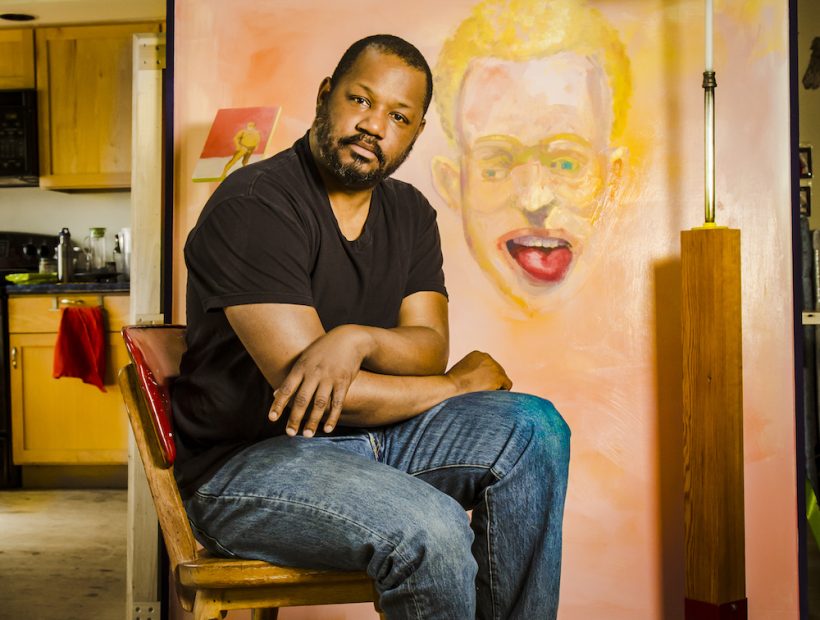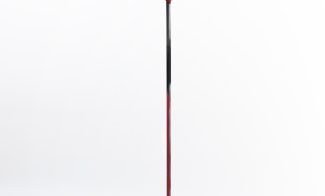When we visited in March, artist Steve Locke’s modest, pleasingly cluttered live/work space in Hyde Park was dominated by the works he’d been preparing for his ICA show: several small paintings of men sticking out their tongues, mounted on brightly decorated pedestals using metal pipes, as well as one large wall painting, leaning near his kitchen.
This is the first major museum exhibition for Locke, who, at 50 years old and 20 years into his artistic career says, “I’m hitting my stride in my practice.” Organized by Helen Molesworth, Barbara Lee Chief Curator, the exhibition also includes an installation of multiple paintings recalling earlier polyptychs and a neon work bearing the show’s title, there is no one left to blame.
Locke showed us around his studio, cheerfully discussing his work and upcoming exhibition.
ICA: Congratulations on your exhibition. What will we be seeing?
SL: I’m showing all new work. Helen could show anybody she wants to. She’s sort of taking a risk on showing me, so I wanted to have all new work for her.
Let’s talk about your work. Most of these paintings are mounted on pedestals and pipes, so that they’re freestanding. Why?
For my second solo show at Samson, You Don’t Deserve Me, I really wanted to do something that moved the whole idea of painting forward. I’m in love with Rauschenberg, like everybody else, and I started thinking of the history of painting being about the history of signage and wondering, if this painting didn’t have the wall, how would it exist in the world? So I started figuring out how to make the paintings behave in a way that makes them feel autonomous. I was making these weird drawings with heads and spikes that connected them to the ground, and then I thought, I can just make a line in space: I can use the poles to draw, to connect the things to earth. And then they just came one after the other.
Why paint men with their tongues sticking out?
It’s hard to make a painting of a man and not have him look important. So I came up with this weird gesture. I like that they’re not heroic, and not attached to any body. They’re floating around in the atmosphere, waiting to possess somebody, or get inside your head and transform you. I’m painting out of my own nightmares: I think a lot of the images are grotesque and frightening, like a head on a spike. That notion of something that’s alive and dead at the same time comes up in the work. It’s like Medusa, when she has her head cut off and her tongue is lolling out.
Do you use models?
Early in my career, I had people who were nice enough to give me their likenesses to work with. But as the paintings got more and more grotesque and violent, I thought, I really don’t want to do that to anyone I know.
One work, Requiem, is so much quieter and more subdued than the others.
That’s central to the loss that a lot of the work is about: the loss of that particular time in life, of a particular kind of beautiful subject. A lot of it has to do with the AIDS epidemic, and being 50 years old, and knowing that most of my peers are either living with HIV or dead. I have a photo of a group of my friends on the Cape here in the studio, and now almost all these people are gone. There are other pieces that are about that, but this one addresses it directly.
You said a lot of your friends are living with HIV now. It must be so hard.
You sort of feel like the last of the Mohicans. It was just awful. You’d hear so-and-so has a head cold, and four days later they were gone. No one knew why or how, and no one would help. What was so terrific about the ’80s show, was seeing that addressed.1 Because the history of that time hasn’t really been written yet; people who lived through it are actually getting past being traumatized enough to really talk about it. I had lunch with one of the guys in the photo a few weeks ago, and we were like, “Did that really happen?”


